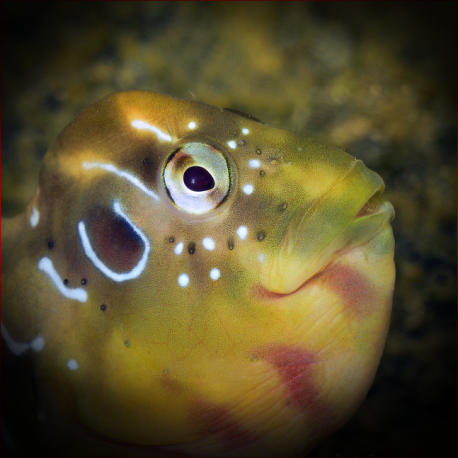More info
Datasheet
| Minimum Tank Size | 400 litres / 105.67 US gallons |
| Maximum Size | 13.0cm / 5.12inches |
| Reef Compatible | Always reef safe |
| Temperament | Unknown |
| Temperature | 22.2°C / 71.96°F - 25.6°C / 78.08°F |
| Specific Gravity | 1.020-1.025 |
| Carbonate Hardness | 8-12 |
| pH | 8.1-8.4 |
General Description
The Peacock blenny, scientifically known as Salaria pavo, belongs to the Blenniidae family, specifically under the Salaria genus. These fish have an oblong shape with a long dorsal fin, and while they are not very colorful, they are known for their lively personalities. They typically grow up to 13.0cm and are native to the Mediterranean Sea.
Aquarium Suitability
The Peacock blenny is deemed suitable for special aquarium setups due to its average hardiness. They are recommended for tanks with a minimum size of 400 liters and require water conditions with a pH ranging from 8.1 to 8.4, a specific gravity between 1.020 and 1.025, and a temperature of 22.2-25.6°C.
Care and Hardiness
These blennies have a moderate level of hardiness, adapting well to aquarium environments. They thrive in cooler waters, with temperatures ideally between 18 and 24°C (64 and 75°F). Their recommended diet includes macroalgae, microalgae, and small crustaceans like krill, mysis, and artemia.
Reef Suitability
The Peacock blenny is always considered reef-safe, making them suitable additions to reef aquariums without posing a threat to the coral or other invertebrates within the tank.
Aquarium Setup
To maintain a suitable habitat for the Peacock blenny, the aquarium should provide ample space for swimming and hiding spots for security. Incorporating live rock structures and algae patches can mimic their natural habitat, encouraging natural behaviors and grazing opportunities.
Behaviour
While the temperament of the Peacock blenny is listed as unknown, they are generally peaceful towards tank mates, as they are not known to exhibit aggressive behaviors. These blennies exhibit curious behaviors and are often seen darting in and out of rock formations.
Feeding and Diet
Their diet primarily consists of zooplankton such as Cyclops and pods, along with a varied selection of foods including macroalgae, microalgae, and small crustaceans like krill, mysis, and artemia. Providing a diverse diet is essential for their overall health and vitality.
Habitat and Distribution
In their natural habitat in the Mediterranean Sea, Peacock blennies are often found among rocks, coral reefs, and seagrass beds, where they feed on small invertebrates and algae. Their distribution is limited to the marine environments of the Mediterranean Sea due to their specific habitat requirements.

